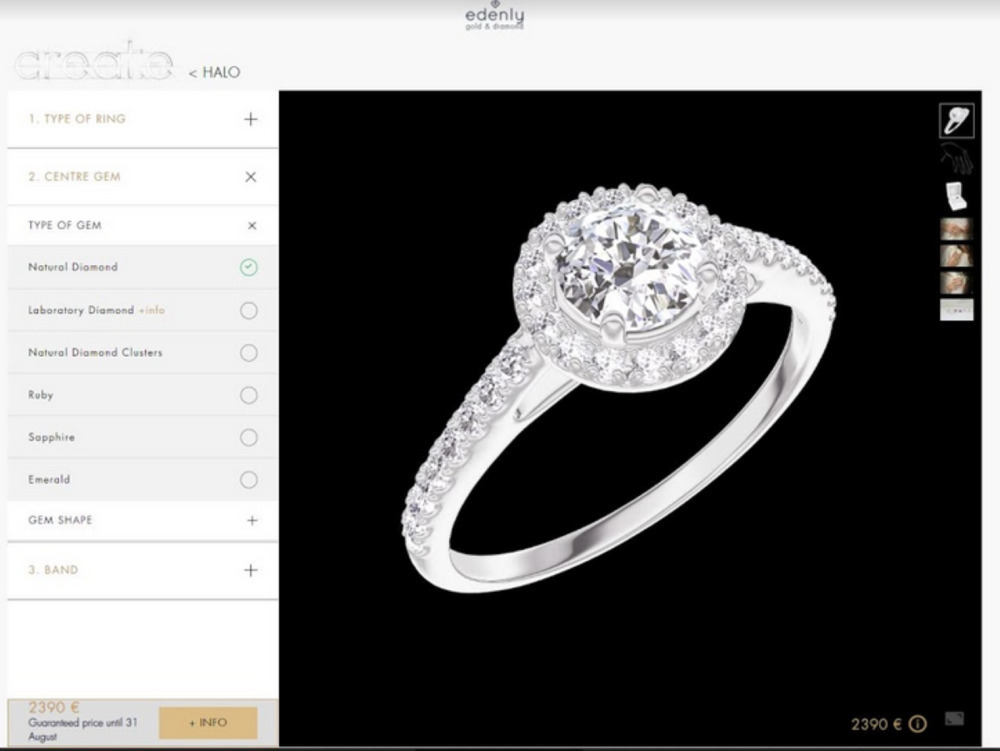
What is 3D Visualization? Choosing the Best Technology (2024 update)
Table of content
This article was updated in early 2024 to reflect current trends and projections for the period 2024-2030.
Following recent events and the post-COVID market shift, customer expectations for online shopping have significantly increased.
As a result, there's a growing demand for innovative and cost-effective 3D visualization to meet these heightened customer expectations.
According to the Compound Annual Growth Rate (CAGR), the visualization and 3D rendering software market size was valued at USD 1.50 Billion in 2022 and is projected to reach USD 9.78 Billion by 2030, growing at a CAGR of 30.7% from 2023 to 2030.
The best 3D visualization software offers benefits such as improving workflow, saving time, and limiting costs. Such software is also used for different purposes such as marketing, product design and modeling, animation, and more.
This article will look at how 3D visualization has impacted the e-commerce industry by becoming the latest trend to increase conversion rates and customer satisfaction.
What is 3D visualization, and how does it work?

Discover 3D visualization for custom products
What is meant by 3D visualization?
3D visualization refers to a set of techniques used to represent objects in three-dimensional (3D) space through graphical simulations.
Today, more and more industries are using 3D visualizer software at every stage of their projects:
- Architecture
- Urbanisme
- Product design
- Scientific simulation
- Video game
Depending on specific requirements and techniques, 3D simulations can take the form of static 3D images, videos or dynamic real-time interactive 3D interfaces.
Computer graphics technology, in 2023, includes two primary 3D rendering methods: precomputed and real-time rendering. Forecasts for 2030 suggest that the visual realism gap between the two technologies will narrow.
Precomputed rendering
Precomputed rendering generates output in the form of images, image sequences, or videos. This kind of creation achieves high-quality and realistic results because it makes use of the entire rendering capabilities of computers or 3D computer farms. This way, it can simulate all the interactions between light and matter in a realistic manner, but there is no interactivity.
The main lighting techniques implemented are Global Illumination (GI), Ray Tracing, and Radiosity.
Real-time rendering
Real-time rendering allows for the calculation of a 3D object directly during its manipulation in real-time. Each movement or change triggers an ultra-fast calculation, creating the illusion of a realistic visualization.
Although this method may be slightly less precise in simulating lighting compared to precomputed rendering, its rapid calculations allow for real-time interaction with 3D objects. This opens up numerous possibilities for real-time 3D visualization, such as 3D product configurators for e-commerce or design, virtual try-ons, augmented reality, or virtual reality.
The primary techniques for real-time 3D visualization include Rasterization and Real-Time Lighting, Shader-based Lighting, Environment Mapping (HDRI)
Precomputed rendering vs Real-time rendering
Today, the graphics rendering capabilities of real-time devices are increasingly powerful and efficient. This means that the gap between precalculation and real time tends to be smaller. A simple smartphone already provides a very high level of realism for real-time 3D visualization.
Apviz is a 3D visualization platform that allows users to simulate & interact with virtual objects in real time. It features a high-performance engine that is specialized in rendering demanding materials. Apviz offers interactive 3D visualization for digital twins of products that are sold through e-commerce.
3D visualization is an exciting part of virtual reality. It’s the process of creating 3D graphics images using 3D software.
3D software uses a mixture of technologies to create 3D, photo-realistic images and real-world feeling content. It uses 3D modeling, computer-generated imagery, graphics, and rendering to create a three-dimensional image that resembles reality.
The existence of companies that offer virtual try-on services is a great example of this. Companies such as Baume and Mercier and Fred Jeweler allow you to view a 3D representation of your desired product without physically visiting a store.
3D visualization and 3D rendering take the process of purchasing online to the next level, especially when it comes to buying luxury goods where the consumers have higher expectations. 3D visualization responds to this demand by adopting 3D technologies to highlight all the product’s key features, with 360-degree product views and real-time personalizations.
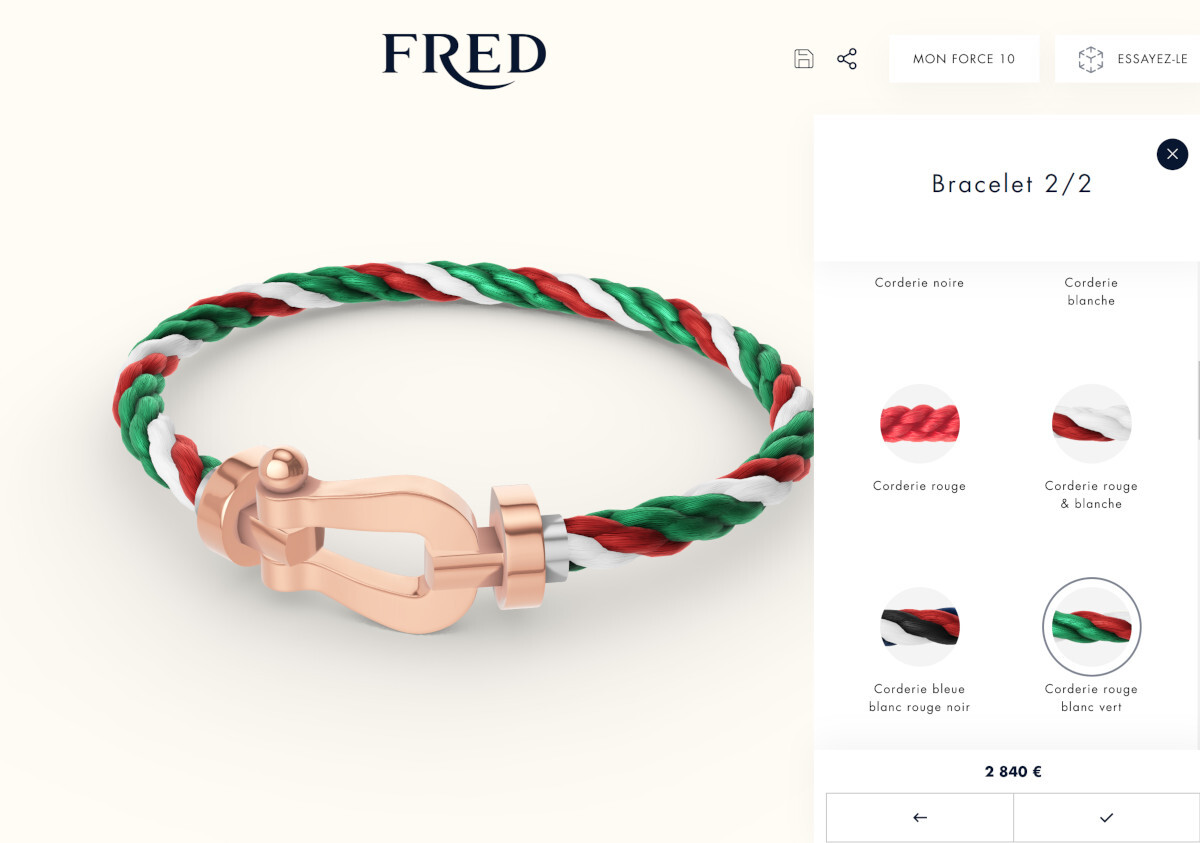
Benefits of 3D visualization
3D configurator and Ecommerce
For e-commerce, real-time 3D product visualization has become a web standard thanks to WebGL, just like images or videos. This standard paves the way for a multitude of innovative cross-channel customer experiences. Users can interact with products online and virtually try them out. This significantly reduces one of the main obstacles to e-commerce purchases, which is the inability to see products clearly and try them before buying.
3D visualization offers improvements in e-commerce by transforming traditional static product photography into a fun, interactive, and easy way to promote their product or services using visuals.
Let’s learn some of the many benefits that 3D visualization software has to offer and explore how 3D visualization works.
Increases conversion rates and customer retention
Before 3D visualization and photorealistic rendering became possible, the only way to see a realistic representation of the product was to go to a physical store.
At that time, companies weren’t optimizing their websites to make the user experience better. Instead, they would use vague descriptions, few images of the product, and complicated websites, making the simple process of buying online 10 times more difficult. Because of this, many consumers preferred going to a physical store to buy their products.
Unfortunately, situations like this are still happening. However, 3D visualization helps increase functionality and facilitate online shopping, therefore increasing conversion rates and customer retention.
A professional 3D visualization company helps brands create 360-degree models of products the customers can interact with. Thanks to these 3D visualization features, companies can quickly grab the attention of customers and increase conversion rates.
Allows customers to personalize and customize
The whole idea behind 3D visualization and rendering engines is allowing customers to customize products to their liking. Customer satisfaction increases when companies allow users to explore all essential product features and add their personal touch.
Companies allow customers to personalize their products through 3D visualization by implementing a user-friendly 3D product configurator. Customers can easily change the texture, colors, features, or sizes of a product depending on their wants and needs.
3D visualization increases sales by creating emotional connections
When it comes to selling online, using emotional marketing combined with effective 3D visualization tools is a must for e-commerce companies. This is especially true for luxury goods brands where customers usually have higher expectations given the amount of money they are willing to pay.
Emotional marketing and 3D visualization answer this demand by allowing customers to see photorealistic images of the product’s key features and offers real-time personalization to their liking.
It saves time and money
If you take the traditional way of promoting your products through static photography, it’s time-consuming. You have to hire a photographer to work with every piece individually and take pictures from every angle. Editing images can take several days or even weeks, and then, you still need to choose the perfect ones that fit your advertisement strategy.
Besides, if you really want good results, you will have to pay for a professional photographer (don’t forget the number of pay increases with the number of products you need to showcase) plus creating a set, which all can add up to be a costly option
You can avoid this extensive process with 3D visualization. In this process, you can get real-life visuals of your product from every angle you want. This helps you easily showcase a product in a way that grabs attention and leads to higher conversion. Also, you don’t need to worry about photo editing and other extra costs.
3D visualization implementations
The need for easy access to consumer goods from the comfort of home has exponentially increased over the last year.
The overall shopping experience has become more demanding, especially when you look at online complex products that offer a high number of combinations.
Let’s see how different companies have successfully implemented 3d visualization tools in their marketing strategy.
One excellent instance is Provost, an industrial furniture specialist. They elevated the 3D customization experience to the next level by providing customers a vast selection of industry-specific workbench options. Real-time 3D representation significantly simplified comprehension of the product range available.

Discover the 3D Workbench configurator
Puma teamwear provides a tool that team members can use to design their own 3D sports uniform. This tool is a 3D customized jersey configurator. For example, a soccer team can easily import its logo and enter player names and numbers. The result is a custom football jersey that can be produced on demand and shipped to the club.
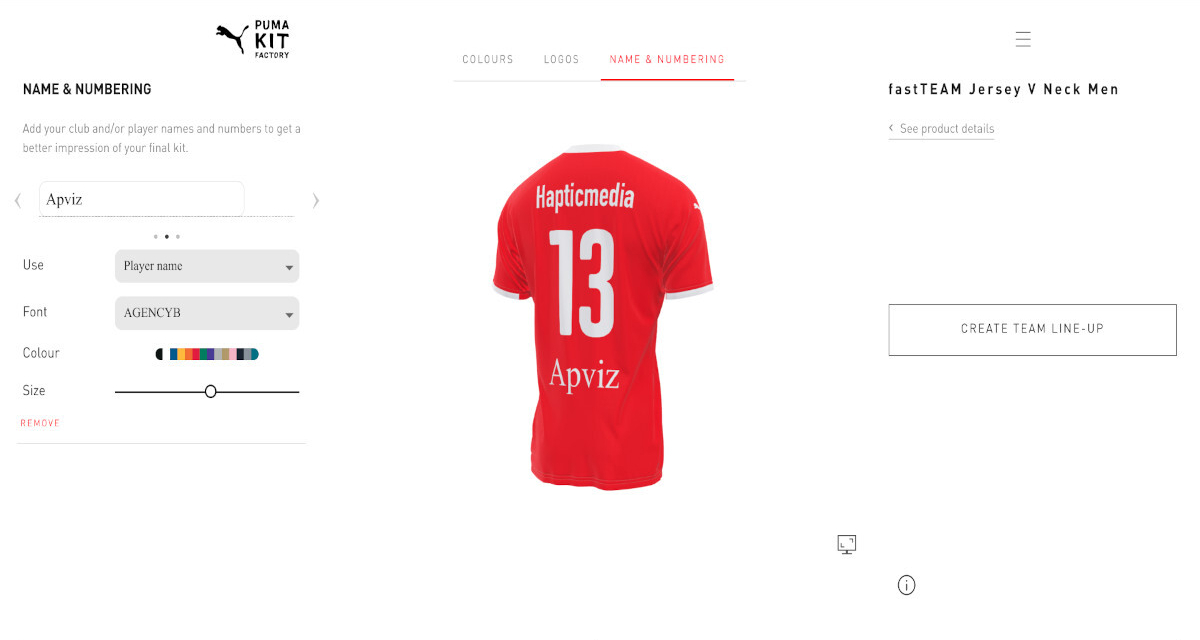
Discover 3D visualization for custom jersey
The latest 3D visualization trends for e-commerce
In recent years, online shopping has risen more than ever before. According to studies in 2017, by 2040, 95% of purchases will be facilitated by e-commerce.
Let’s dive deeper into some of the latest trends for 3D visualization in the e-commerce industry that transform online shopping to a new level.
- Improvements in augmented reality (AR): Such changes allow buyers to project realistic 3D visualization of items into a natural environment, giving customers a unique and fun shopping experience. A good example of a company that offers this service is Baume. You can connect your smartphone to your wristband to visualize your watch directly on your wrist. You can choose to bring further changes to the design or complete your purchase.
- Product bundling: 3D artists combine 3d models of the brand’s goods to sell as a package at a lower price than if they sell them individually. With traditional photography, this process would be costly and time-consuming. Instead, 3D visualization provides the same result for a reasonable cost and much faster.
- 3d visualization services: These can help pre-sell e-commerce products by sharing photorealistic visuals, 3d animation, 360-degree models, and more. Thus, companies can test the market and allow customers to pre-order their products or services.
3D visualization is here to stay
Understanding how successful businesses implement 3D visualization and the latest trends for 3D visualization in the e-commerce industry will help companies make product demonstrations more convincing, help streamline product customizations, and increase customer retention.
Considering how 3D visualization services have grown over the past year due to COVID-19 and the increasing demand for shopping consumer goods online, there’s no doubt why marketers are promoting digital products in dramatically different ways.
Digitizing your brand and implementing marketing strategies as 3D visualization gives you the leverage to position your brand to the next level.
Apviz has over 15 years of expertise in immersive technologies, including 3D rendering services, 3D visualization, 3D models, and product customization and configuration, contact us now.
By Yahong Zhang - Tue Dec 19 2023
Stay informed
Discover more articles

17 e-commerce trends to leverage for higher sales
From augmented reality to omnichannel marketing and remote services, e-commerce trends are adjusting to give customers the best possible experiences....
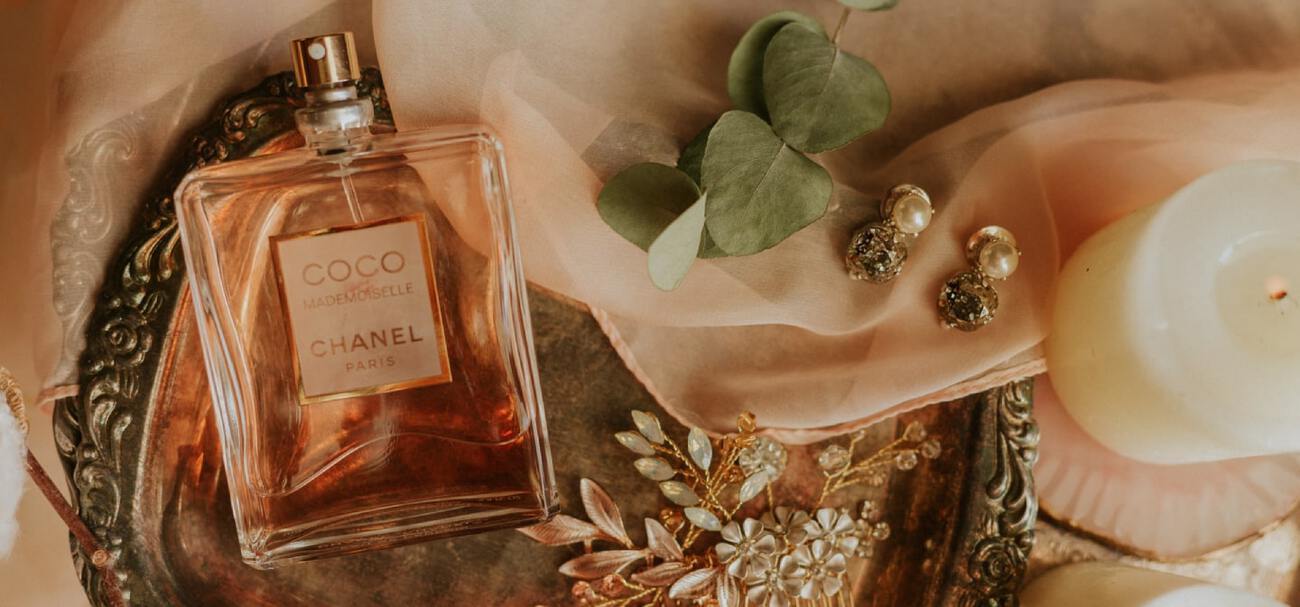
Cosmetics industry trends and marketing techniques
The cosmetics industry, also known as the beauty industry, includes fragrances, skin, hair and personal care and color cosmetics like facial make up products, nail care products, lip care products, and eye make-up products....
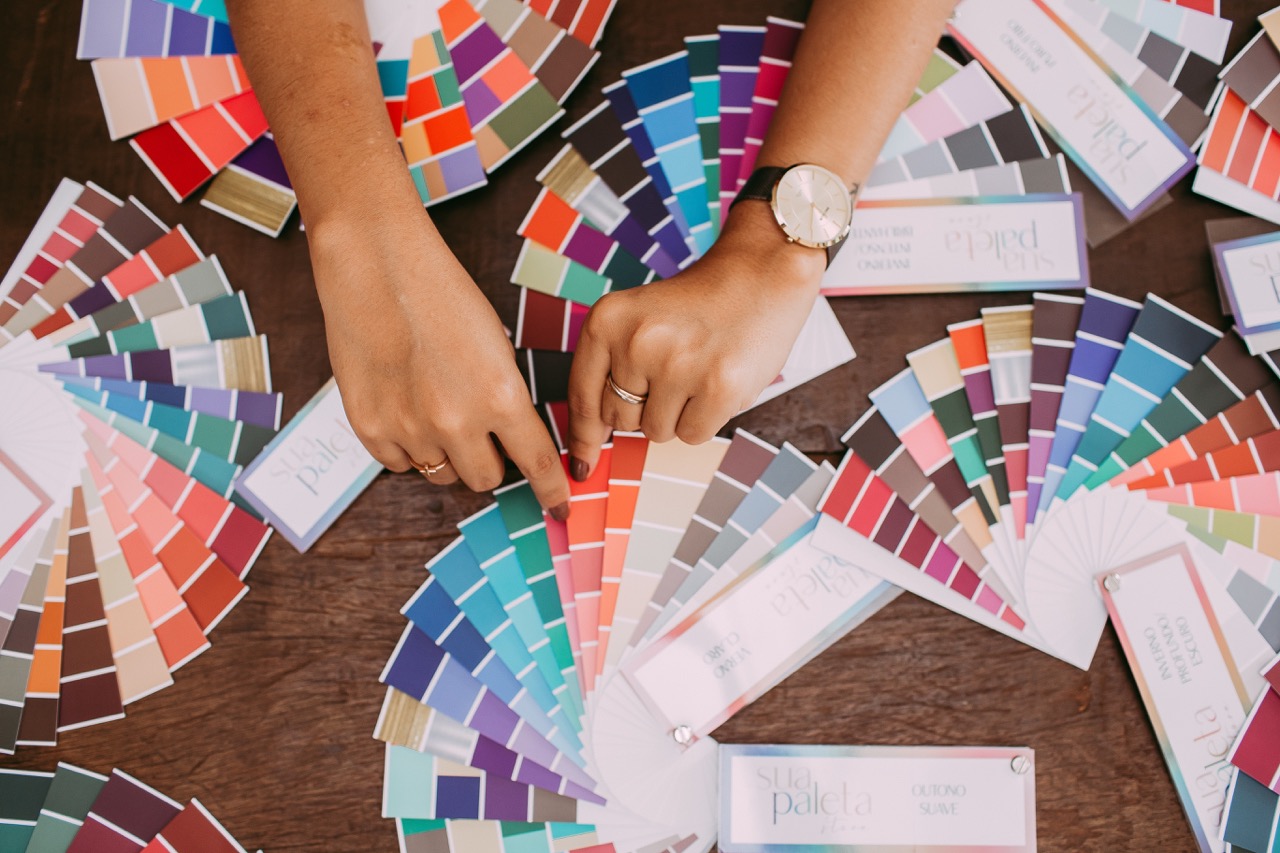
3D product visualization and made to order, a strategy for success?
This article explores the impact of a 3D configurator dedicated to custom manufacturing companies, which revolutionizes your business by offering an immersive and innovative customer journey. It enables customers to visualize products before they are...